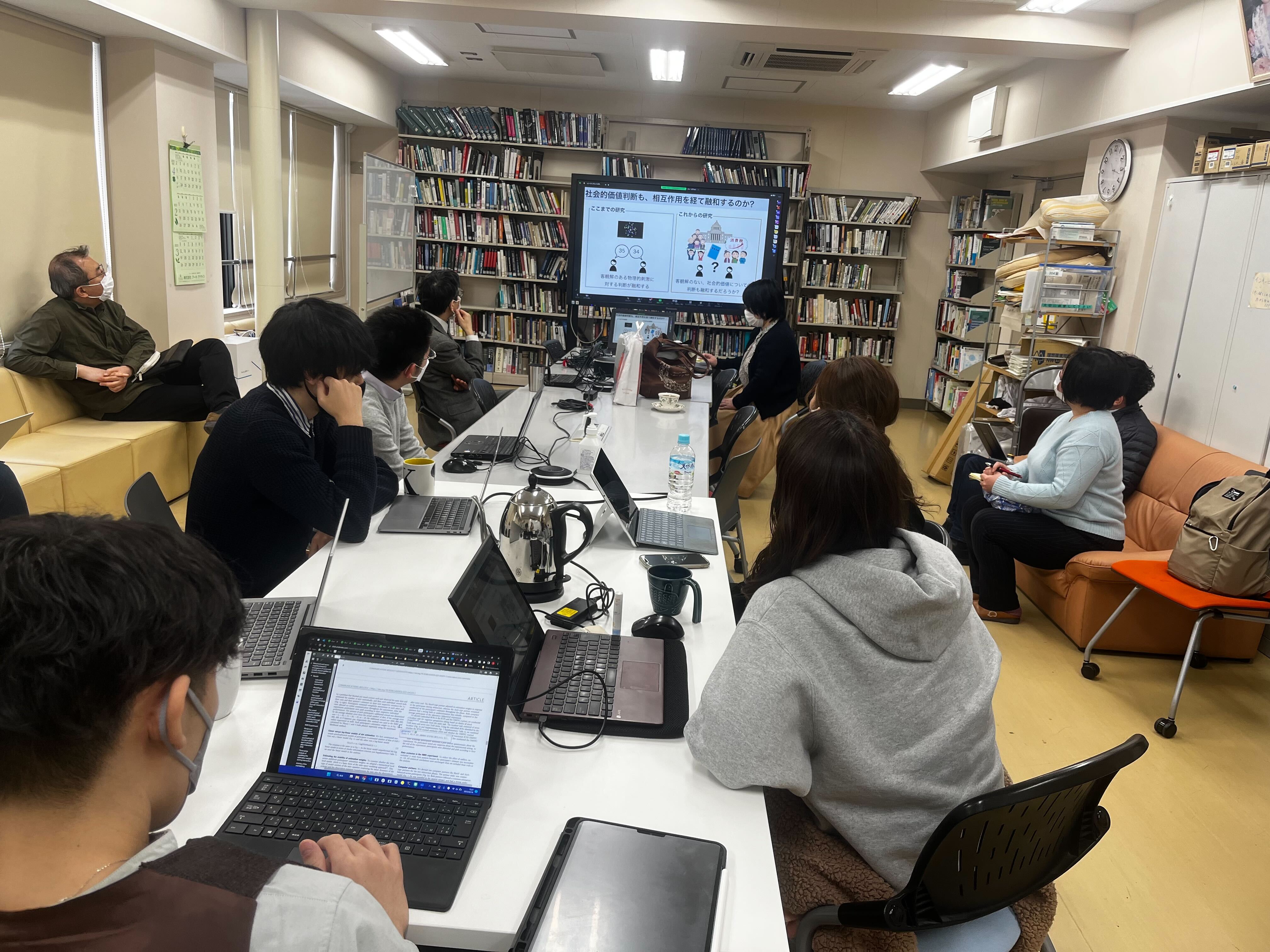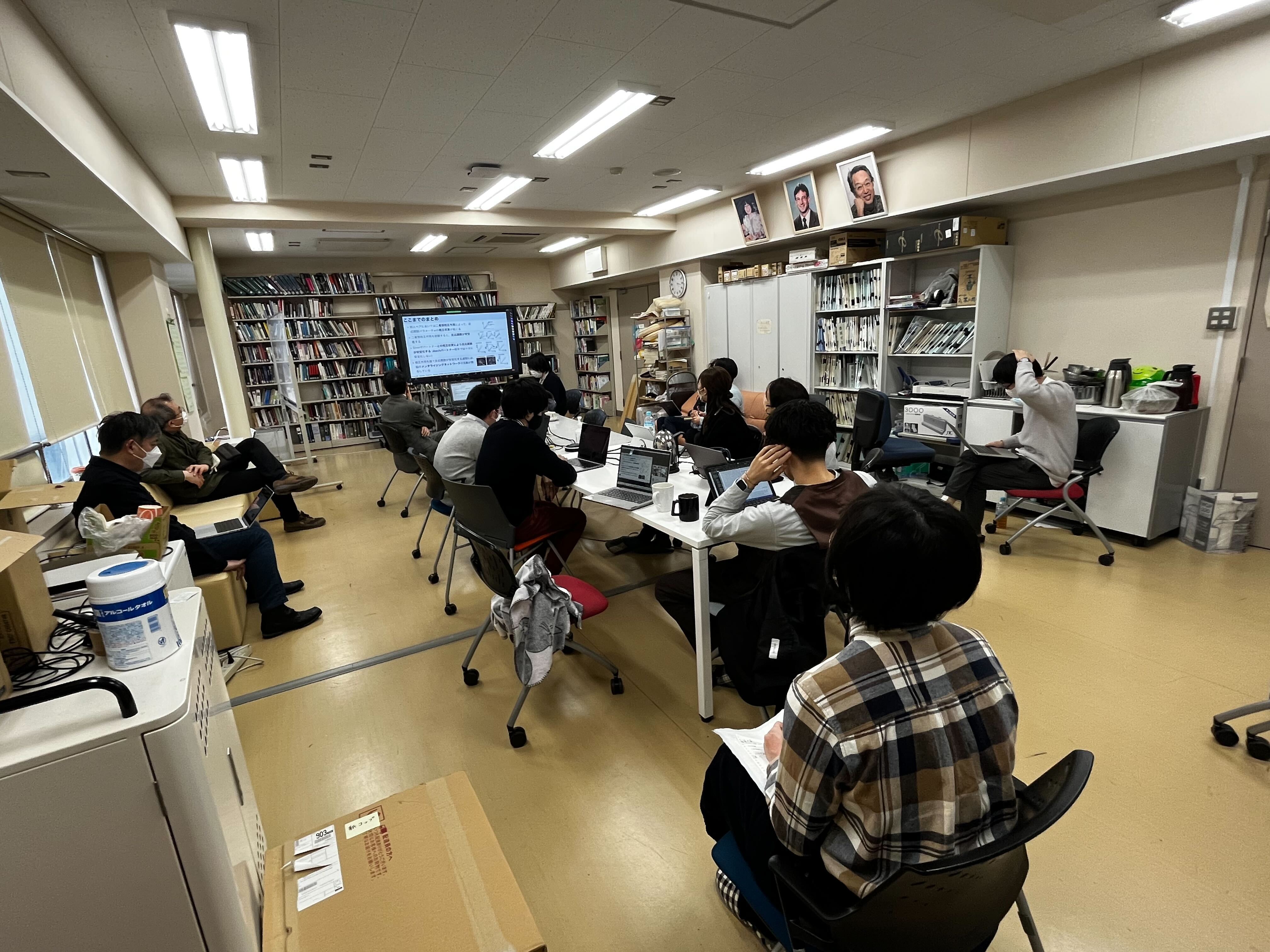Neurocognitive foundations of how “ways of seeing the world” converge -Toward the elucidation of conditions for conviviality.
Date & Time: 2023. 2. 16(Thu) 14:45-16:15
Location: Onsite & Online Hybrid Meeting
Hokkaido University, Faculty of Humanities and Human Scieces, room E304
(Zoom)https://us06web.zoom.us/j/84129588474?pwd=aU9zZ1lEOVA2bnp5SDdab2NMc1M1UT09
Title: Neurocognitive foundations of how “ways of seeing the world” converge -Toward the elucidation of conditions for conviviality.
Speaker: OGURA Yukiko (Japan Science and Technology Agency;Center for Experimental Research in Social Sciences,Specially Appointed Assistant Prof.)
Abstract:
Recently, together with the development of social networking services, it is said that “the societal divide” is becoming increasingly visible. Examining how people with different values can live together in society is an urgent issue in modern society. On the other hand, people’s values or “ways of seeing the world” are not necessarily fixed. Rather, they can change through interactions between people.
We have elucidated the cognitive and neural basis of the process by which people’s “ways of seeing the world” are reconciled through interaction (Kuroda, Ogura, Ogawa, Tamei, Ikeda, and Kameda 2023 Communications Biology). In a series of experiments, participants were paired to estimate the number of dots and were provided with feedback on their own and others’ estimates. As a result, the parameters of their response functions (i.e. their ways of the world) to the dots became similar, even though they were not told to match their partners. In addition, the response function parameters were stabilized through the interaction. To elucidate the neural basis of this process, we next conducted fMRI measurements. Participants were asked to estimate the number of dots, with “Student A” who can converge with them and “Student B” who never converge with them. When the partner was “Student A”, i.e. when they mutually approached each other, the response function parameters stabilized and the functional connectivity between the RTPJ and the DMPFC, the brain regions involved in estimating the state of the others, increased. When the partner was “Student B”, i.e. a partner with whom there was no mutual convergence, neither increased RTPJ-DMPFC functional connectivity nor stabilization of the reaction function parameter occurred. It is suggested that the neural circuits used to acquire the perspective of others play a major role in the process by which people’s “ways of seeing the world” converge into a “shared reality” through interaction. Can this interaction-based reconciliation occur, then, even when the decision is not limited to the judgment of an objective target, such as the number of dots, but also involves a social value judgment? Reanalysis of data from a previous behavioral experiment (Ueshima, Mercier, and Kameda 2021 Journal of Experimental Social Psychology) suggests that even when people are asked to make social value judgments about distributive justice, it is possible that value reconciliation can occur through interaction (dialogue). Does this reconciliation occur through the same mechanism as in the judgment of objective targets, or is it different? I would like to discuss the possibilities for future research.
Participants: 28


Susumu Ohnuma, Director, Center for Experimental Research in Social Sciences
e-mail: ohnuma[at]lynx.let.hokudai.ac.jp (please replace [at] with @)